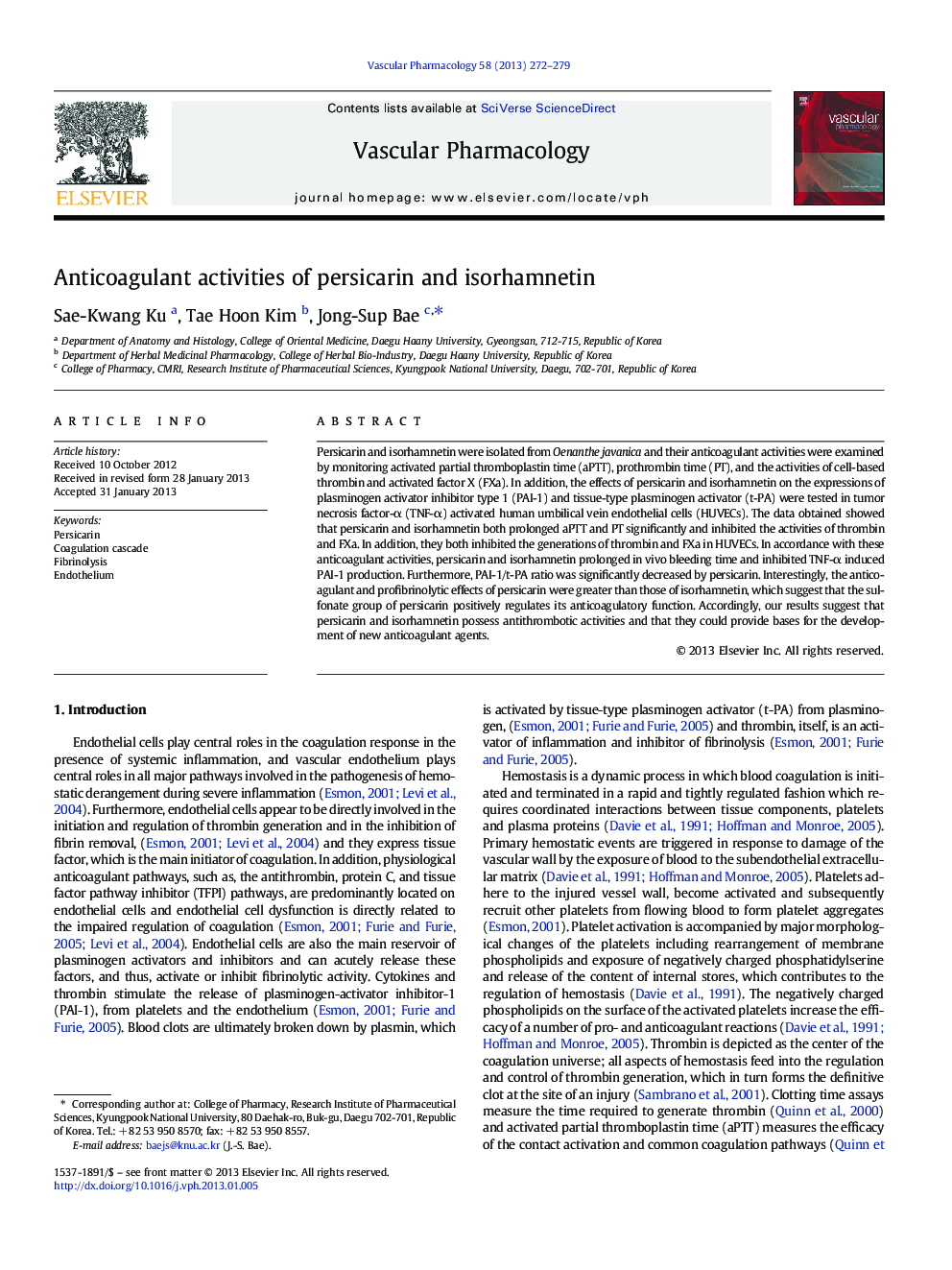| Article ID | Journal | Published Year | Pages | File Type |
|---|---|---|---|---|
| 2574280 | Vascular Pharmacology | 2013 | 8 Pages |
Persicarin and isorhamnetin were isolated from Oenanthe javanica and their anticoagulant activities were examined by monitoring activated partial thromboplastin time (aPTT), prothrombin time (PT), and the activities of cell-based thrombin and activated factor X (FXa). In addition, the effects of persicarin and isorhamnetin on the expressions of plasminogen activator inhibitor type 1 (PAI-1) and tissue-type plasminogen activator (t-PA) were tested in tumor necrosis factor-α (TNF-α) activated human umbilical vein endothelial cells (HUVECs). The data obtained showed that persicarin and isorhamnetin both prolonged aPTT and PT significantly and inhibited the activities of thrombin and FXa. In addition, they both inhibited the generations of thrombin and FXa in HUVECs. In accordance with these anticoagulant activities, persicarin and isorhamnetin prolonged in vivo bleeding time and inhibited TNF-α induced PAI-1 production. Furthermore, PAI-1/t-PA ratio was significantly decreased by persicarin. Interestingly, the anticoagulant and profibrinolytic effects of persicarin were greater than those of isorhamnetin, which suggest that the sulfonate group of persicarin positively regulates its anticoagulatory function. Accordingly, our results suggest that persicarin and isorhamnetin possess antithrombotic activities and that they could provide bases for the development of new anticoagulant agents.
Graphical abstractFigure optionsDownload full-size imageDownload high-quality image (89 K)Download as PowerPoint slide
